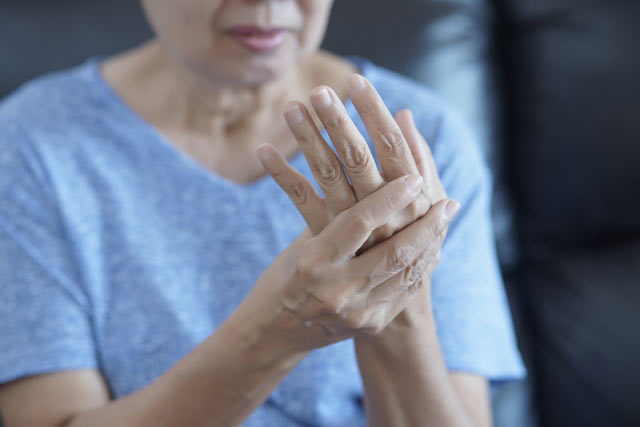
Inflammation of your joints is generally referred to as arthritis, although it can relate to well over 100 diseases. When your body experiences an injury that results in pain, swelling and stiffness, your body will react by becoming inflamed in that region. When inflammation lasts for a long period of time, your tissue can become damaged and eventually lead to arthritis.
With over 100 different types of arthritis, it can be hard to break down each individual disease and reactions. At Summa Pain Care we see many different types of arthritis. We are to help you with arthritis management and pain treatment in Peoria, AZ.
Here are some of the more common types of arthritis we see at our clinic:
Spinal Arthritis
In your spine, there are two joints and a disc at each level. When viewed from above, the joints in your spine resembles an equilateral triangle, with the disc at the top corner and the two joints at the other corners. The “facet joints” are the z-joints. The facet joints are no different than any other joint in your body, and arthritis can develop in these joints over time.
In fact, arthritis of the facet joints is universal with aging. Even if you are not experiencing pain, X-rays of your back will show arthritic changes, with calcium buildup and joint narrowing if you have spinal arthritis. The medical term for these changes is spondylosis. All this word means is that there are arthritis findings on X-Rays or MRIs. It does not mean these findings are painful!
The facet joints can certainly cause pain and debilitation. Pain worse in the morning and pain worse with looking over the shoulder are common complaints of people with facet pain in the neck. Pain worse with getting up from a chair, pain worse with bending, and pain with turning in bed are common complaints of people with lower back facet pain.
Treatment options for joint pains are simple stretchability exercises, physical therapy modalities like ultrasound and traction, or injections or radio frequency ablation if the other methods do not provide enough relief.
Osteoarthritis
The most common type of arthritis seen is osteoarthritis. This occurs when the cartilage that covers the end of your bones begins to gradually wear away. With the cartilage being rubbed down, the bone is exposed and begins to rub against one another. This results in friction leading to pain and swelling. While osteoarthritis can occur in any joint, it most often affects the hands and weight-bearing joints such as the knee, hip, and facet joints. Osteoarthritis occurs most often as the cartilage breaks down, or degenerates, with age. This is the reason osteoarthritis is sometimes called degenerative joint disease.

Rheumatoid Arthritis
Rheumatoid Arthritis (RA) is another common arthritic diagnosis. This is a long-lasting disease that can affect several parts of your body, but most commonly involves your hands, wrists and knees. With RA, your immune system mistakenly attacks your body’s joints and will cause the lining of your joints to swell. This inflammation can spread to surrounding tissues, eventually damaging cartilage and bone.
What are the causes of arthritis?
The bottom line is that the cause of most types of arthritis is just not known. There are several risks, such as your traits or behaviors that can increase your chance of arthritis. Other theories lie in genetics.
Risk factors of arthritis include the following:
- Your age. Your risk of developing arthritis, especially osteoarthritis, increases with age.
- Your gender. Arthritis occurs more frequently in women than men.
- Your weight. Being overweight or obesity puts extra stress on your weight-bearing joints which increases wear and tear thus increasing your likelihood of developing arthritis.
- Your work environment. If your job requires repetitive movement or constant heavy lifting, this can add stress to your joints. It can lead to injury as well.
- Your genetics. There are certain types of arthritis that run in families and are at least partially inherited.
How is arthritis diagnosed?
If you are concerned about arthritic changes in your body, your first step should be to get in contact with Summa Pain Care. We can fully evaluate, diagnose and provide and in-depth treatment plan to get you the pain relief you need now and in the future.
Once we obtain a full medical history that includes all of your symptoms and a physical exam, we can then suggest testing. We may need X-rays or an MRI to complete our diagnosis. We may also suggest laboratory testing to help determine or rule out diseases.
How is arthritis treated?
The exact way your arthritis is treated will depend on several factors at your individual level. Treatment can include medication, physical therapy, exercise, heat/cold compresses, injections and surgery. It will be up to your provider as to which treatment will be suite you.
Bottom Line
Arthritis management and paint treatment for Peoria, AZ. residents is absolutely achievable. A proper exam by your provider coupled with diagnostic tests will determine what type of arthritis you might have and what your best treatment option will be.
Comments are closed.
